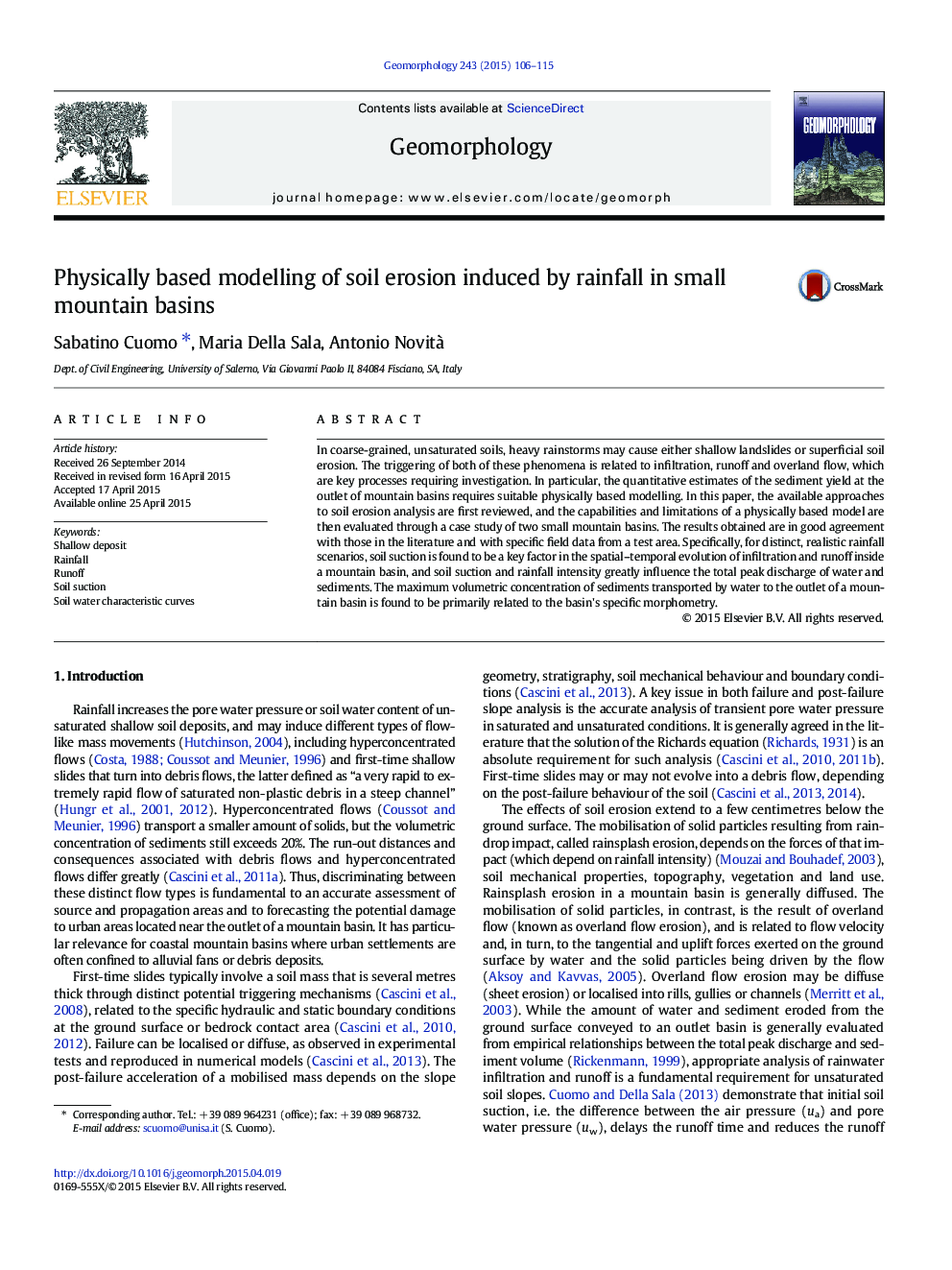| Article ID | Journal | Published Year | Pages | File Type |
|---|---|---|---|---|
| 4684202 | Geomorphology | 2015 | 10 Pages |
In coarse-grained, unsaturated soils, heavy rainstorms may cause either shallow landslides or superficial soil erosion. The triggering of both of these phenomena is related to infiltration, runoff and overland flow, which are key processes requiring investigation. In particular, the quantitative estimates of the sediment yield at the outlet of mountain basins requires suitable physically based modelling. In this paper, the available approaches to soil erosion analysis are first reviewed, and the capabilities and limitations of a physically based model are then evaluated through a case study of two small mountain basins. The results obtained are in good agreement with those in the literature and with specific field data from a test area. Specifically, for distinct, realistic rainfall scenarios, soil suction is found to be a key factor in the spatial–temporal evolution of infiltration and runoff inside a mountain basin, and soil suction and rainfall intensity greatly influence the total peak discharge of water and sediments. The maximum volumetric concentration of sediments transported by water to the outlet of a mountain basin is found to be primarily related to the basin's specific morphometry.
